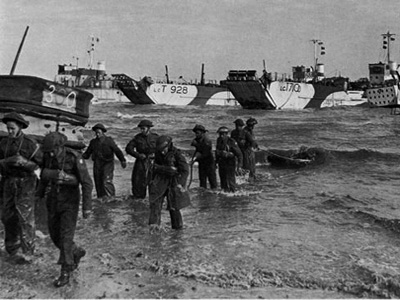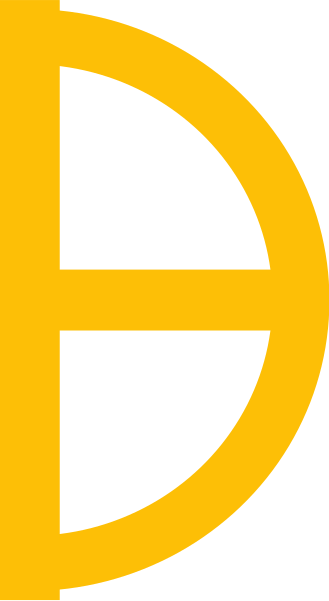Lieber Himmel ! Ein Liebster !
(or Achtung! Englander! ...Aaaargh?)
"Gefreiter! Zu Befehl, Herr Oberst!Der OKW haf dezided zat you have earned an award in ze field of battle!
Really, Herr Oberst. Der Eizen Kreuz, Herr Oberst? Der Ritter Kreuz?
Nein Gefreiter! Der LIEBSTER!"

Slightly awkwardly, Liebster translates as "Lovey or Beloved":
It has (no kidding) German origins – the word “Liebster” has several definitions: dearest, sweetest, kindest, nicest, beloved, lovely, kind, pleasant, valued, cute, endearing, welcome, sweetheart and boyfriend (really?)
Joking aside, many thanks to Paul at "Red Dog of War" who nominated my blog. The Liebster Award is a nice way to acknowledge and promote blogs in the blogosphere. In our case, the sharing and promotion of our beliebster miniature worlds of wargaming.
You nominate eleven blogs (usually with less than 200 followers) to answer eleven questions.
Those eleven then nominate another eleven, and so on, like a chain letter, giant pyramid or Ponzi scheme of mutual back patting and shameless blog promotion. Great, innit?
You also get a snazzy "award" logo to stick up on your blog that links back to the person who nominated you. All in good fun!
My answers to the Eleven Questions:
1. Why did you start blogging ?
I have always been reasonably good at writing. I love history, gaming, painting and modeling. I love militaria, photography and aeroplanes, and in fact everything that flies.(Birds included)
Our wargames club (Kapiti Wargames Club) here north of Wellington seemed doomed to suffer an ungraceful death due to a confluence of circumstances. Steps were taken re-organise and to promote our club. One of the decisions we took was to create a club Facebook and Web presence. Several of us undertook to start putting articles together, and next thing I was one of those members writing for the club, and an admin for the blog and FB pages. So I needed to learn how to blog.
Getting a bit embarrassed at blowing my own trumpet on the club page and blog, I decided to start blogging on my own too: "Trouble in the Border Provinces", was my first blog
At first I blogged on both Fantasy and WW 2 on one blog, but soon realised that not everyone appreciated the mix, and separated the two: So enter: "Wargames Obsession!"
Ok...there is one more: Aircraftnut; about my love for aeroplanes.
Just like painting and gaming, blogging becomes an obsession too...(sigh)
2. If you could change one thing about the wargaming hobby, what would it be?
Commercialism feeding hard core competitiveness and vice versa.
For me there is no fun to play against someone who wants to win at all costs. Competitive I am, but it is all about the fun element for me. Bring your toys and I'll bring mine, we'll agree on a rule-set and have fun.
For me it's NOT:
" Lets see how we can make you buy more expensive models, as we have dreamed up a new model with some amazing stats that is going to make this model the Wunderwaffen that will make your opponent's list so strong that he will OVERKILL you every time, and if you want to remain competitive you will have to invest in a similarly expensive model, and by the way those expensive models you bought last week, they are now obsolete!"
For a while I bought into the arms race created by the you-know-who's of the analog gaming world, but I am becoming more and more disenchanted as we go along. Hence back to garage hammer and my roots in a way. Brought out the old 20 mm figures, affordable and a history that can not be changed at a whim...
the PzKfw VI Tiger I is NEVER going to become obsolete (well between 1942 and 1945, anyway)
3. What is best in life?
The joy of living. Every day as it comes. I enjoy my work and my hobbies, my family and friends. I am able to afford some of the toys that almost seemed out of reach as a kid.
4. Do you want to live forever?
No, but some more time for gaming and my other hobbies would be nice. Living long enough to clear that hobby pile of shame (un-built kits) under my work-space would be nice.
5. Fame or Fortune?
Neither. I'd like to fly below the radar. Comfort and recognition maybe. Being an established professional in a relatively small community being known and recognised is not always fun.Sometimes I quite enjoy being invisible in the crowd. I really pity those stars and social climbers who end up having no privacy due to their fame or fortune. They are welcome to it ! Recognition by my peers does give me a little satisfied glow, be it in the form of a Liebster, a hobby "nice model or paint job" or professional pat on the back.
6. What miniatures are you most proud of having painted?
I'm pretty happy with my ever expanding plastic and lead hordes, and how my painting skills (still lacking) have improved over time. If I had to single one out, it would have to be a Fantasy Confrontation (Rackham) Rag'Narok Orc Hero/Lord/Chieftan, which I built a year or so after getting into WHFB and 28mm models for the first time. I think it marks my painting skills turning a corner.
Since then I have painted several themed armies that I am quite proud of: Empire Talabheim/Talabecland, Daemons of Chaos (Again a Rackham model as a Khorne Lord/Hero) and My GW Nurgle Daemons (Specifically Epidemius and The Drones of Nurgle) and then of course, the only army that has seen formal competition- My Dark Elves!
In 20mm WW2 I'm really chuffed at how I am starting to get uniforms and armour right.
German Erbsenmunster and Eichenmunster and both German and Allied Paratroop Camo would be up there. My K-rad Zug (Italeri) seems to hit the spot with fellow gamers. Achieving a uniform look for my armoured units is also satisfying.
7. How do you deal with burnout?
I keep switching between genres and armies. When I get sick of Warhammer I swop to FoW and vice versa. Building terrain also helps, and also helping my youngest daughter who has recently discovered she can make her own Barbie Doll furniture and accessories. Dad has helped make a spa pool, a lounger etc. Quite proud of her, chip off the old block! Second chip actually, with my 15 year old son taking out a painting prize second year in a row at our club's Golden Griffon painting competition.
I also indulge in my other hobbies,sea fishing, travel, photography and bird-watching, and sometimes help out in my wife's catering business.
8. Why is a raven like a writing desk?
Corvidae, the Ornithological order that ravens and crows belong to, is one of the few bird orders that can do barrel rolls and loops. If you try really hard you can also do this with your writing desk. Specifically the older types with an inkwell and a top that lifts up. Do try it.
9. Star Wars or Star Trek ? Either, actually, but only the first 3 Star Wars movies and up to Jean Pickard in Star Trek. After that it just seemed they were flogging a dead horse and some of the magic just was not there. Jarjar Binks was funny-bleh!, the special effects good but they killed the story. Hmmm...Jedi Knight, YOU not make. Lets not mention cartooning it.
Like Paul, I also enjoyed Battlestar Galactica. Does anyone remember Space 1999 ?
10. If you could only buy from one miniature company from now on, which one would it be?
For my current purposes Plastic Soldier Company. They seem to understand the need for affordable, simple and quick to build kits for wargaming with enough detail, and multiple units in each standard pack. A+ for PSC ! If only their website could navigate a bit easier! Also liking Valiant, but a very limited range.
11. What is your favourite takeaway? Fish and chips; closely followed by Chinese from our local Cantonese restaurant. Struggling to find a good curry in Kapiti now-days.
So there ya go. My penny's worth on the questions.
And my eleven blog nominees are:
Mike Creek at Bunkertalk- blogs on his love for plastic soldiers of all scales, current events and history
Steven Beat at Kitnoob
- 1/72 gaming and modeling
Tim Gow at Megablitz and more
-" Toy soldiers, wagames and modelling madness"
The Hoodling at The Hoodling's Hole
- Warhammer Fantasy Battles
Steve at Bleaseworld
- Wargaming Ancients, Medievals, WW1 and 2, WHFB, 40K and Iron Cow
Sam and Fern at Napalm Elf and Rebel Scum
- WHFB, Warmahordes, FoW, and then some!
Jossy at Plastic krak
- WHFB, current GW gaming news and 40K
Nick Jebson at HMS Distraction
- WHFB, FoW, History and Militaria
Rex Foote at The Dice Odyssey
- WHFB
Thanos at Miniatures and Terrain
- WW2 from a Greek perspective, great hints and tutorials
Will McNally at Will's Wargames Blog
- WW2 1/72 and more. Excellent tournament pics
-































.jpg)



















